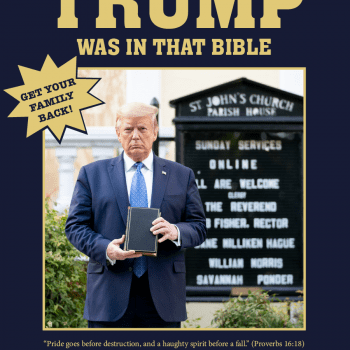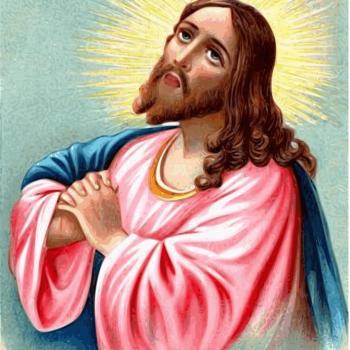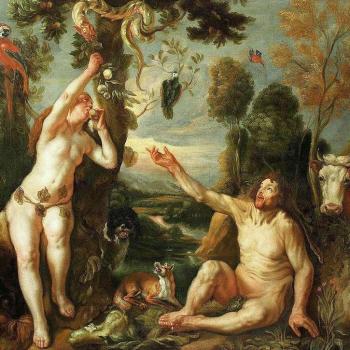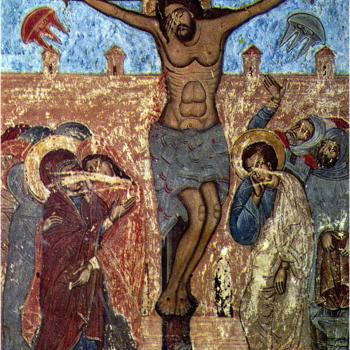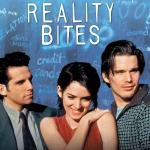What is Rahner’s Rule? Trinity Part 2
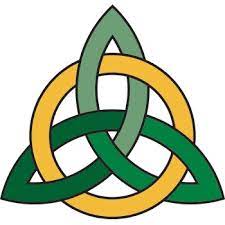
Two Karls are responsible for the recent revolution in Trinity thinking: Karl Barth and Karl Rahner. Rahner’s Rule speaks for both Karls.
What is Rahner’s Rule? Before we get to Rahner’s Rule, let’s distinguish between the immanent Trinity and the economic Trinity.
Immanent Trinity and Economic Trinity
There’s only one Trinity. But theologians distinguish two modes. The first, the immanent Trinity, refers to the way the three persons relate to one another. We dub this relationship perichoresis in Greek and circumincessio in Latin. The second, the economic Trinity, has nothing to do with money. Rather, the economy of God has to do with God’s interaction with the world. The economic Trinity is the one revealed to us in the history of Jesus.

Theologians of yesteryear commonly touted, opera trinitatis ad extra indivisa sunt — that is, the works of the Trinity are indivisible in the economy. What does that mean? Reformation theologian John Calvin (1504-1564) tries to help us grasp this.
Christ with respect to us is called God,
With respect to the Father, Son.
The Father with respect to us is called God,
With respect to the Son, Father.
The Spirit with respect to us is called God,
With respect to the other two persons Spirit.
Rahner’s Rule
With the distinction between the immanent Trinity and the economic Trinity in mind, we turn to Roman Catholic sockdolager Karl Rahner (1904-1984). Here is Rahner’s Rule succinctly put.
“The economic Trinity is the immanent Trinity, and the immanent Trinity is the economic Trinity” (Rahner, The Trinity 1997, 22).
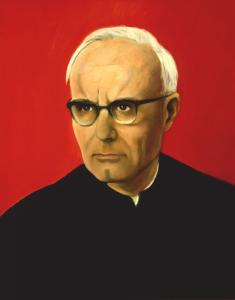
Rahner here opens the perichoresis of the three persons to include the life of Jesus along with the history of the the entire creation. Rahner’s Rule is also dubbed Rahner’s basic axiom (Grundaxiom).
“The Father is the incomprehensible origin and the original unity, the Word his utterance into history, and the Spirit the opening up of history into the immediacy of this fatherly origin and end. And precisely this Trinity of salvation history, as it reveals itself to us by deeds, is the ‘immanent’ Trinity” (Rahner, The Trinity 1997, 46-47).[1][2]
Barth’s version of Rahner’s rule avoids the terms immanent and economic. Yet, I believe he means what Rahner means.
“The One who according to the witness of Scripture is and speaks and acts as Father, Son, and Spirit, in self-veiling, self-unveiling, and self-imparting, in his holiness, mercy, and love, this and no other is God….God is precisely the One He is in showing and giving Himself” (Barth 1936-1962, I/1: §9: 382).
There is no immanent Trinity higher than, or distinct from, the economic Trinity. This means that the history of this created world is swept up into God’s internal life.
Why is Rahner’s Rule important?
Why is Rahner’s Rule important? Because it tells us that what happened during Jesus’ life story within time and place also happened within God’s internal and eternal perichoresis. Even the suffering and death of Jesus belongs within the life of the immanent Trinity.[3][4][5]
Does this mean that God suffers? Does this mean that God experiences the death of Jesus? Yes. Well, it looks that way. Kathryn Tanner affirms theopassianism with considerable force.
“The very life of God is…directly mixed up with suffering, conflict, death, and disease in the saving action of Christ. Divinity need not fear its own contamination or loss of honour in coming into direct contact with corruption and death in Christ” (Tanner 2011, 357).
But isn’t God eternal, immutable, and unchangeable? If so, how can God suffer and die?
Does God really suffer and die?
In the Formula of Concord’s Solid Declaration of 1577, the Lutherans tell us that the Son of God “experienced every tribulation in the assumed human nature … [and] for this reason can have sympathy with us as fellow human beings, he wants to be with us in all our troubles” (Kolb 2000, 633). The experience of the 2nd Person becomes an experience within God’s trinitarian life.
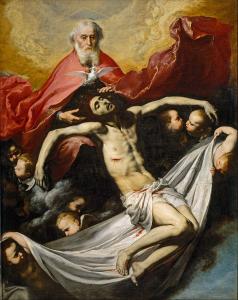
Now, let’s see how many angels can dance on the head of a pin. Does God as Father experience time, space, suffering, and death? No. At least according to those theologians who look over their shoulder to be certain the Inquisition is not questioning their Chalcedonian orthodoxy. Safe theologians deny patripassianism, according to which God as Father suffers and dies. But they may affirm theopassianism, according to which suffering and death take place within God’s economic and even immanent experience.
Tübingen’s Reformed luminary Jürgen Moltmann provides an example of a safe trinitarian theologian. He carefully entertains the question of God’s death. But then, he shrinks back into the safety of an orthodox protection of the Father’s eternal purity. “Jesus’ death cannot be understood ‘as the death of God’, but only as death in God.” (Moltmann 1974, 207). Death in the Trinity, yes. But the Father remains untouched.
Twentieth century Lutheran theologian Wolfhart Pannenberg (1928-2014), however, throws such orthodox caution to the wind. He grants that “The Father suffers with the sufferings of the Son” (Pannenberg, Systematic Theology, 3 Volumes 1991-1998, 2:391). As a human parent would suffer while watching a child suffer, God the Father empathizes with the Son and, therefore, indirectly feels the Son’s suffering and death. That is to say, the history of Jesus’ death now belongs not just in the economic Trinity but within the life of the immanent Trinity as well. And God as Father feels it. In fact, all the suffering and death experienced within the evolution of the cosmos is similarly felt by God. That’s the implication of Rahner’s Rule.
Redemption sweeps the history of creation into God’s trinitarian life
Rahner’s Rule implies that God’s redemption sweeps the history of creation into God’s trinitarian life. Here is Pannenberg.
“The incarnation of the Son…brings creation into the trinitarian fellowship…for it is the means of actualizing the royal rule of the Father in the world. Without lordship over his creation, God would not be God….By the incarnation of the Son sinners who are under penalty of death are saved, reconciled, brought into the trinitarian fellowship of God, and thus made participants in eternal life” (Pannenberg, Systematic Theology, 2:389-390).[6]
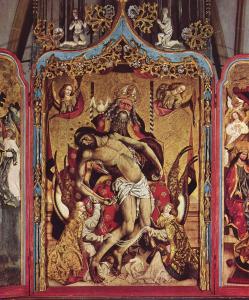
Similarly, Lutheran systematic theologian Kristin Johnston Largen.
“As God experiences all of the diversity of human life—our physical experiences, our distinct but interrelated human histories, and certainly our religious practices and religious life—God is affected by these things and they play a role in the way in which God’s being comes to fruition, the way God’s lordship ultimately is expressed, and certainly the final determination of human meaning and truth” (Largen 2021, 195-196).
Here is the soteriological implication of staggering import of Rahner’s Rule. The suffering and death not only of Jesus but of all creatures in the history of the cosmos are swept up into the immanent perichoresis of the divine life.
Conclusion
In short, whatever you and I do becomes part of God’s trinitarian experience. God is our fellow sufferer who understands as we understand. Jesus Christ – who represents you, me, and all of creation – presents us as forgiven to God the Father and invites us into the divine life through God the Holy Spirit.
ST 2018 What is Rahner’s Rule? Trinity Part 2
ST 2017 What is the Trinity? Trinity Part 1
ST 2018 What is Rahner’s Rule? Trinity Part 2
ST 2019 Islam on the Trinity? Trinity Part 3
▓
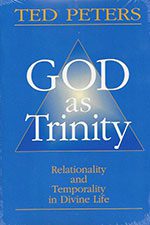
For Patheos, Ted Peters posts articles and notices in the field of Public Theology. He is a Lutheran pastor and emeritus professor at the Graduate Theological Union. He co-edits the journal, Theology and Science, with Robert John Russell on behalf of the Center for Theology and the Natural Sciences, in Berkeley, California, USA. His single volume systematic theology, God—The World’s Future, is now in the 3rd edition. He has also authored God as Trinity plus Sin: Radical Evil in Soul and Society as well as Sin Boldly: Justifying Faith for Fragile and Broken Souls. See his website: TedsTimelyTake.com.
▓
Notes
[1] Does Rahner’s Rule suggest that the eternal God experiences temporality? Yes, according to the late Christoph Schwöbel. “The incarnation implies that the finite can become the means of communication for the infinite, the temporal the means of expression for the eternal, and so drives toward the inclusion of the temporal in the eternal” (Schwöbel, 2018, 354).[2] Korean systematic theologian Chung-Hyun Baik explains and expands Rahner’s Rule (Baik, 2011).
[3] Katherine Sonderegger rejects Rahner’s Rule for methodological reasons. Rahner’s Rule makes the Divine Trinity contingent upon self-communication and soteriology within temporality. “Rahner seeks a grounding of Trinity in soteriology: the Myster of the Trinity is a conceptualization of God’s saving Self-Communication,” she reports (Sonderegger, 2:29). Then, Sonderegger proffers her alternative. “When we say that the Triune Lord is beyond soteriology, beyond revelation, beyond liturgy and worship and praise, we trace, in this beyond, the Mark of the Lord’s own Self-Definition. It is His Stamp, His Concrete Die, His Lofty Sovereignty. He, this very One”(Sonderegger, 2:87).
[4] According to evangelical Fred Sanders, “the doctrine of the Trinity poses the question of how salvation history is to be correlated with the divine being in itself, or to describe the connection between God and the economy of salvation” (Sanders, 2021, 30).
[5] David Bently Hart and Ralph Allen Smith criticize Rahner’s Rule because it seems to make God dependent on the world for God’s own identity. ” In Rahner’s equation, the immanent equals the economic. If that is the case, one could start with the economic and make it the standard by which to judge and evaluate the immanent. In fact, if the immanent is defined by the economic, then God must create the world and become incarnate in order to become who He really and truly is. God the immanent Trinity realizes Himself through history.” This critique misses the mark, in my judgment. For Barth as well as Rahner, God creates ex nihilo, testifying to God’s freedom and aseity. God’s ingression into the creation via the incarnation and spiritual presence is a divine choice, not a metaphyisical necessity.
[6] Another evangelical, Roger Olson, follows the Barth/Pannenberg rail rather than the Rahner rail on the train leading to the classic trinitarian station. “I learned that theologian Karl Barth was responsible for launching a renaissance of the doctrine of the Trinity after centuries of neglect and that the renaissance continued through numerous trinitarian theologians such as: Emil Brunner, Leonard Hodgson, Claude Welch, Juergen Moltmann, Wolfhart Pannenberg, Robert Jenson, Stanley Grenz, Walter Kasper, Ted Peters, and Catherine LaCugna…evangelicals, among whom I have counted myself, have always insisted on belief in God as one substance shared equally by three distinct persons as a cornerstone doctrine.”
References
Baik, Chung-Hyun, 2011. The Holy Trinity — God for God and God for Us. Eugene OR: Wipf and Stock.
Barth, Karl, 1936-1962. Church Dogmatics, 4 Volumes. Edingburgh: T. & T. Clark.
Kolb, Robert and Timothy Wengert, eds. 2000. The Book of Concord. Minneapolis MN: Fortress.
LaCugna, Catherina Mowry. 1991. God For Us. New York: Harper.
Largen, Kristin. 2021. “Plurality and Salvation: Possibilities in Pannenberg’s Soteriology for Comparative Theology.” In The Enduring Promise of Wolfhart Pannenberg, by ed Andrew Hollingsworth, 183-200. Lanham MA: Lexington.
Moltmann, Jűrgen. 1974. The Crucified God. New York: Harper.
Pannenberg, Wolfhart. 1991. An Introduction to Systematic Theology. Grand Rapids MI: Wm. B. Eerdmans.
—. 1991-1998. Systematic Theology, 3 Volumes. Grand Rapids MI: Wm B Eerdmans.
Peters, Ted. 1993. God as Trinity. Louisville KY: Westminster John Knox.
Rahner, Karl. 1978. Foundations of the Christian Faith. New York: Seabury Crossroad.
—. 1997. The Trinity. New York: Herder.
Sanders, Fred, 2021. The Fountain of Salvation: Trinity and Soteriology. Grand Rapids MI: Eerdmans.
Schwöbel, Christoph, 2018. “The Eternity of the Triune God: Preliminary Considerations on the Relationship between the Trinity and the Time of Creation,” Modern Theology 34:3 (July) 345-355; DOI: 10.111/moth.12421.
Sonderegger, Katherine, 2015, 2020. Systematic Theology. 2 Volumes: Minneapolis MN: Fortress.
Tanner, Kathryn, 2011. “The Trinity as Christian Teaching,” The Oxford Handbook of the Trinity, ed., Emery Gilles and Mathew Levering. Oxford: Oxford University Press, 349-358.
Vatican. 2003. “Catechism of the Catholic Church.” https://www.vatican.va/archive/ENG0015/__PX.HTM.





